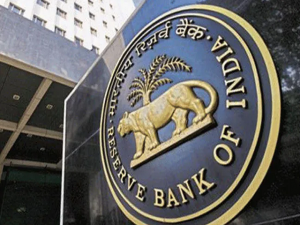 With a view to increase digital payments, the RBI on Friday enhanced the limit of the Immediate Payment Service (IMPS) tranfer to Rs 0.5 million. Earlier, the limit for IMPS transfers was Rs 0.2 million, other than SMS and IVRS. The transfer limit for SMS and IVRS channels is Rs 5,000.
With a view to increase digital payments, the RBI on Friday enhanced the limit of the Immediate Payment Service (IMPS) tranfer to Rs 0.5 million. Earlier, the limit for IMPS transfers was Rs 0.2 million, other than SMS and IVRS. The transfer limit for SMS and IVRS channels is Rs 5,000.
“With RTGS now operational round the clock, there has been a corresponding increase in settlement cycles of IMPS, thereby reducing the credit and settlement risks. In view of the importance of the IMPS system in processing domestic payment transactions, it is proposed to increase the per-transaction limit from Rs 0.2 million to Rs 0.2 million for channels other than SMS and IVRS, ” RBI mentioned in a statement.
On-tap SLTRO for SFBs
A three-year special long-term repo operations (SLTRO) facility of Rs 100 billion at the repo rate was made available to small finance banks in May 2021 to be deployed for fresh lending of up to Rs 1 million per borrower. Recognising the persisting uneven impact of the pandemic on small business units, micro and small industries, and other unorganised sector entities, RBI has decided to extend this facility till December 31, 2021. Further, this will now be available on-tap to ensure extended support to these entities.
Payment and Settlement Systems
Three pilots were successfully conducted in different parts of the country during the period from September 2020 to June 2021, involving small-value transactions covering a volume of 0.24 million for a value of Rs 11.6 million. The learning indicates that there is a scope to introduce such solutions, especially in remote areas. Given the experience gained from the pilots to conduct tests of innovative technology, enabling retail digital payments even in situations where internet connectivity is low/not available, and the encouraging feedback, it is proposed to introduce a framework for carrying out retail digital payments in offline mode across the country.
Geo-tagging of Payment System Touch Points
It has been proposed to lay down a framework for geo-tagging (capturing geographical coordinates — latitude and longitude) of physical payment acceptance infrastructure, including Point of Sale (PoS) terminals and Quick Response (QR) codes used by merchants. This will complement the PIDF framework by allowing better deployment of acceptance infrastructure and wider access to digital payments.
Regulatory Sandbox
The Reserve Bank’s Regulatory Sandbox (RS) has so far introduced three cohorts. Six entities have successfully exited the first cohort on‘retail payments’, while eight entities are undertaking tests under the second cohort on ‘cross-border payments. The application window for the third cohort of ‘MSME lending’ is currently open. With a view to preparing the fintech eco-system, it is proposed that the topic for the fourth cohort will be ‘prevention and mitigation of financial frauds.’ The focus will be on using technology to reduce the lag between the occurrence and detection of frauds, strengthening the fraud governance structure and minimising response time to frauds. The application window for this cohort will be opened in due course. In addition, it is proposed to facilitate on-tap application for themes of cohorts closed earlier. This measure is expected to ensure continuous innovation and engagement with industry to enable a proactive response to the rapidly evolving FinTech scenario.
Debt Management
Considering the uncertainties related to the ongoing pandemic, it has been decided to continue with the enhanced Ways and Means Advances (WMA) limits up to March 31, 2022, and also to continue with the liberalised measures introduced to deal with the pandemic — enhancement of the maximum number of days of OD in a quarter from 36 to 50 days and the number of consecutive days of OD from 14 to 21 days, up to March 31, 2022. The enhanced interim WMA limits totalling Rs 515.6 billion were extended by the Reserve Bank up to September 30, 2021, to help states/UTs to tide over the difficulties faced by them during the pandemic.
FI, Customer Protection
With a view to increasing credit flow to certain priority sectors, bank lending to registered NBFCs (other than MFIs) for lending to agriculture (investment credit), MSEs, and housing was permitted to be classified as PSL (priority sector lending) up to certain limits and was valid up to September 30, 2021. RBI has decided to extend this facility till March 31, 2022.
Internal Ombudsman for NBFCs
In order to further strengthen the internal grievance redress mechanism of NBFCs, the RBI has decided to introduce the Internal Ombudsman Scheme (IOS) for certain categories of NBFCs which have higher customer interface. The IOS for 4 NBFCs, which will be on the lines of IOS for banks and non-bank payment system participants, will require select NBFCs to appoint an Internal Ombudsman (IO) at the top of their internal grievance redress mechanism to examine customer complaints which are in the nature of deficiency in service and are partly or wholly rejected by the NBFCs.







